Proteinuria Remission With Sparsentan in FSGS
By James Tumlin, MD, Joel M. Topf, MD, FACP - Last Updated: April 23, 2025James Tumlin, MD, is president of the NephroNet Clinical Trials Consortium and director of research at Georgia Nephrology, and he has taught at Emory University School of Medicine. He spoke with Nephrology Times editorial board member Joel Topf, MD, at the National Kidney Foundation Spring Clinical Meetings 2025 in Boston, Massachusetts, about the late-breaking abstract, “Patients (Pts) in DUPLEX Achieved Partial or Complete Remission of Proteinuria Earlier and More Often With Sparsentan (SPAR) vs Irbesartan (IRB): Implications for Slowing Progression to Kidney Failure (KF) in Focal Segmental Glomerulosclerosis (FSGS).”
Dr. Topf: Joel Topf for Nephrology Times. I’ve got Dr. James Tumlin here. Thank you for joining me.
Dr. Tumlin: Thanks for having me, Joel.
Dr. Topf: Yesterday you had a late-breaking, high-impact clinical trial on DUPLEX. We saw DUPLEX a couple of years ago, and unfortunately, it was—the conventional read was it’s a negative trial. This is sparsentan in FSGS. A 2-year-long trial and we saw dramatic reductions in proteinuria. Yesterday you presented data on complete remission and partial remission and how that changes data. Why don’t you share what you found.
Dr. Tumlin: The way to address that is that what is evolving in FSGS is similar to what was seen in the IgA nephropathy world, where we started looking at what has been our primary end point. You’re quite correct there; the end point GFR [glomerular filtration rate] was not met in the DUPLEX trial. Part of the reason was because there’s an initial drop in GFR that comes with the usage of an endothelial receptor antagonist, and the consequence of that is it makes it difficult to analyze.
Commensurate with that was the PARASOL study, and the PARASOL study was looking at 1,620 primary FSGS patients with over a gram of protein…
Dr. Topf: Importantly, in DUPLEX, you had primary and secondary FSGS. But PARASOL is only primary.
Dr. Tumlin: Yes, and the PARASOL objective was to find out, if you reach certain goals of proteinuria reduction—300, 500, 500 to 1,500, or over 1,500—what was the long-term outcome of those patients in terms of GFR?
Dr. Topf: Let me guess: The lower the proteinuria, the better the outcome.
Dr. Tumlin: Absolutely.
Dr. Topf: Shocking stuff.
Dr. Tumlin: They reanalyzed and presented the data yesterday in the DUPLEX trial, looking at that end point when, if you had less than 300 mg of protein for 24 hours, you had only a 2.1% chance of progression at the end of 2 years. What they’re saying is—and what a lot of people are now beginning to believe—that proteinuria is probably a better marker for a progressive decline than GFR due to the inherent variability of GFR. This is something that’s in evolution, and the data looks really tight when you analyze it in that fashion.
Dr. Topf: One of the findings was that patients on sparsentan had earlier and more frequent complete remissions, and we’re saying that complete remissions have better long-term outcomes.
Dr. Tumlin: Absolutely.
Dr. Topf: I’m having trouble connecting the dots. Why are we not seeing an improvement in GFR? It’s a 2-year study. It’s a good long runway, right?
Dr. Tumlin: Yes. It’s one of the foibles of clinical medicine. You’re quite right. In those patients that had a less than 300 mg per 24-hour UPCR [urine protein creatinine ratio] at the end of the 108-week period of trial, there was a 2-fold higher protected loss of GFR compared to the irbesartan group, which had only a 2.1% versus 15% progression in the irbesartan group. You’re right. When you look at the slope of the GFR…
Dr. Topf: I just want to make sure I’ve got that. It’s a 2.1% progression with…
Dr. Tumlin: If you achieved a urine protein of less than 300…
Dr. Topf: Regardless of how you got there, or just with sparsentan?
Dr. Tumlin: With sparsentan. Let’s go back and clarify that because in the PARASOL study, that was treatment naive, and they showed exactly the same thing. This way, when you look at the effector being sparsentan, you only had a 2.1% chance of progression.
Dr. Topf: Which is great. My patients would love that. So, magic wand, you get a do-over with DUPLEX. You get to design the study. What does DUPLEX look like under DUPLEX 2.0, if you will?
Dr. Tumlin: It’s a great question.
Dr. Topf: Great question. Not good, great. [laughs]
Dr. Tumlin: When a lot of this data came out with the advent of the ERA [endothelin receptor antagonist] in conjunction with AT1 receptor antagonism, which is what sparsentan does, a lot of us felt like this wasn’t specifically just an IgA drug. Everybody was of the conviction that this is actually a CKD [chronic kidney disease] drug. I think most of us were just kind of waiting for it to progress into other CKDs, including diabetes. There were previous trials—the SONAR trial, you had a different agent that had problems with heart failure. We saw none of that in the DUPLEX trial. There were no cases of heart failure. The safety data was over the top. There was very little hyperkalemia. Even down to GFRs of 30, that was not really a problem. There was no heart failure.
My personal opinion is that these drugs will migrate into being a part of the 3-legged stool of ACE [angiotensin-converting enzyme], ARB [angiotensin receptor blocker], MRAs [mineralocorticoid receptor antagonists], and now ERAs, with SGLT2s [sodium-glucose cotransporter-2 inhibitors] and probably GLP-1s [glucagon-like peptide-1 receptor agonists] as well.
Dr. Topf: OK. I want to switch gears a little bit. What is NephroNet and why should I care?
Dr. Tumlin: NephroNet is a 501(c)(3) nonprofit based in Atlanta, which we started about 16 years ago. We have lots of issues. We enjoy working with industry. One of our core mission statements is to do medical education, so we have an annual nephrology update meeting where we bring in thought leaders from all over the world. We’re kind of famous for doing debates on complicated issues, which adds a lot of theater to it. It’s a lot of fun. It’s a very powerful teaching tool.
Now, what NephroNet is doing… We want to start a third-year nephrology glomerulonephritis fellowship because we’re not based with a university, which means an applicant to our fellowship—wherever they want to go, as long as they’re qualified to teach that individual—we will pay their salary.
Dr. Topf: That’s very cool. Do you think this is going to be mainly a clinical year? Or is it going to be a research year?
Dr. Tumlin: Until we get our full funding, we’re going to do only a clinical year, but our vision is to have a third year and a fourth year. Let’s say you do the fourth year, and you want to go into industry. We’ll teach you big data; we’ll hook you up with companies that teach you medical affairs, those kind of skill sets you never get in nephrology training. You could go into a formal basic science. We will provide seed money for the research and then build up a database investigation for a K08 or a K21 award. Or you could be like me, a frontline community physician that actually does a lot of clinical research.
Dr. Topf: I respect that. If somebody’s interested in NephroNet, if they want to go to this meeting, what should they do?
Dr. Tumlin: Go to our website. You can go to www.nephronet.org, and we have all kinds of contact information, and my cell phone [number]’s on there. You can call me up. [laughs]
Dr. Topf: James, this was outstanding. Have a good meeting. Congratulations on that DUPLEX study.
Dr. Tumlin: Thank you.

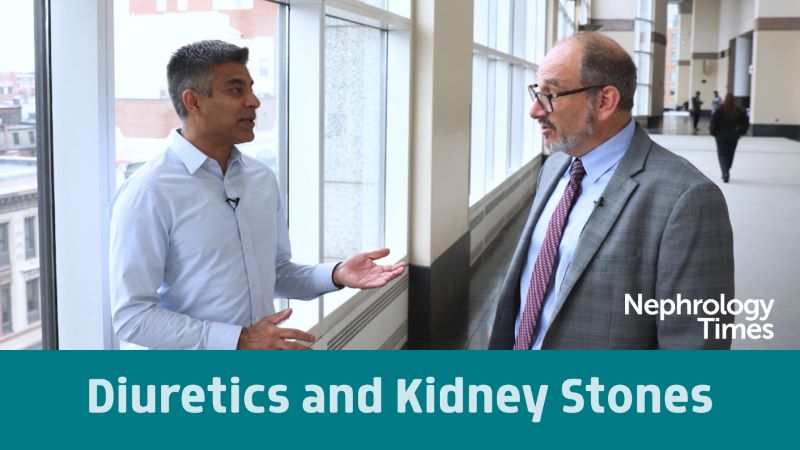
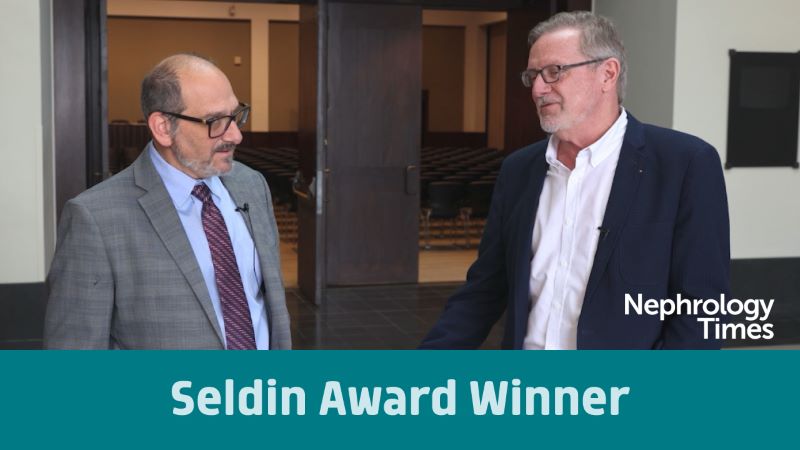
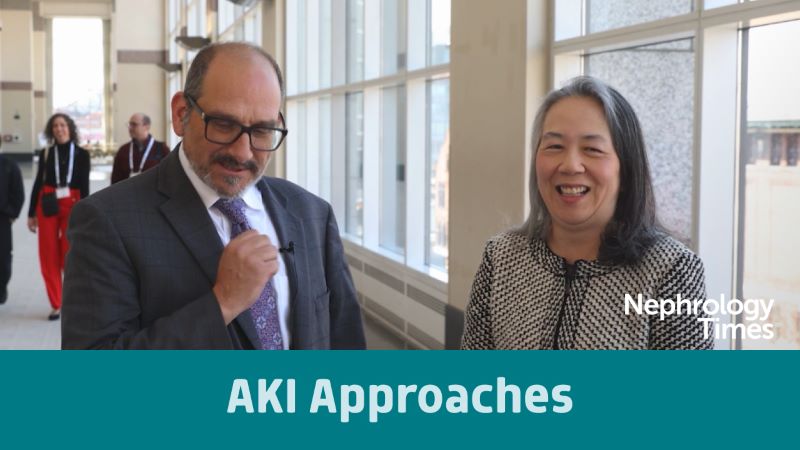
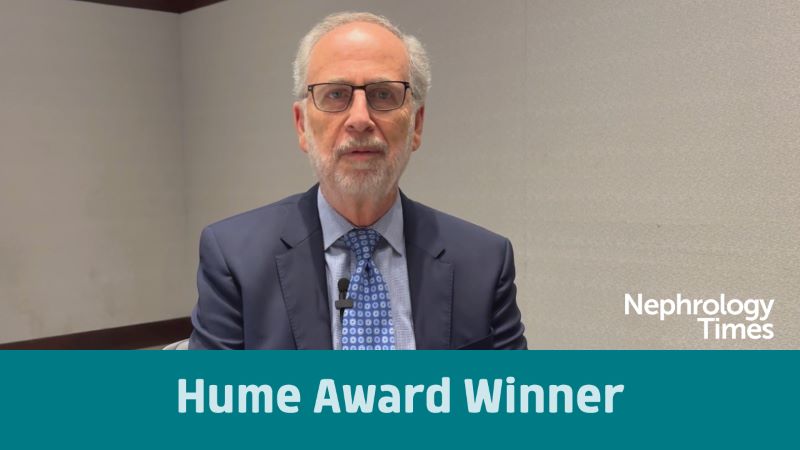
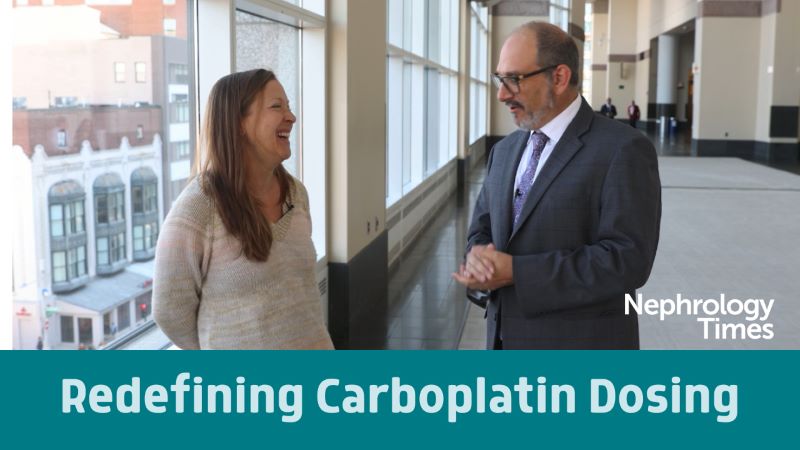

 © 2025 Mashup Media, LLC, a Formedics Property. All Rights Reserved.
© 2025 Mashup Media, LLC, a Formedics Property. All Rights Reserved.